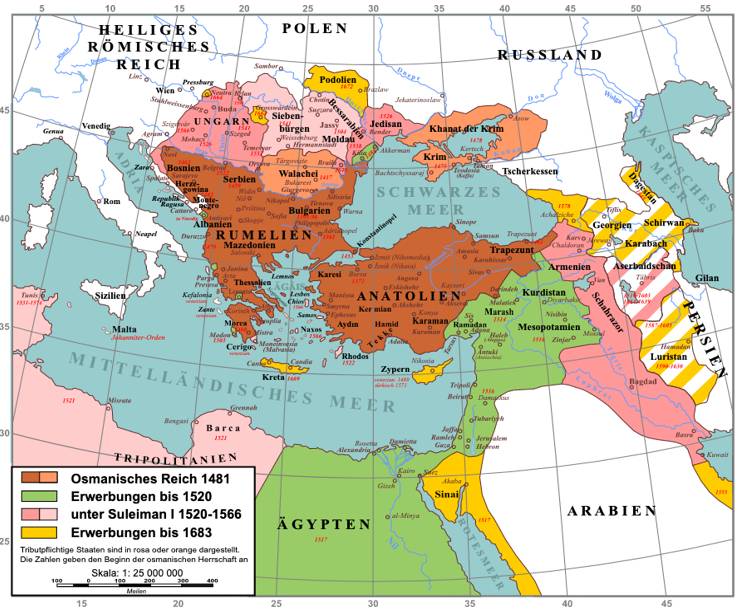
Ottoman Empire, one of the most dominant and long-lasting empires in the world, dates back to the 14th century and has ruled for 600 years. This empire was created by the Turkish tribes in Anatolia and later mushroomed to be one of the most powerful empires in the 15th and 16th centuries. The empire enveloped most of southeastern Europe to the gates of Vienna, present-day Hungary, the Balkan region, Greece, and parts of Ukraine; parts of the Middle East (currently occupied by Syria, Iraq, Israel, and Egypt) North Africa as far west as Algeria and large parts of the Arabian Peninsula. The word ‘Ottoman’ was derived from the name of the founder of the empire, Osman I.
But, what is more, special about this empire? Why is it imperative to get to know them? How did they sustain for 600 years? What is their history? Who were the legendary humans behind this success? How was education during the time? What kind of cuisine did they follow? What was the plight of women? Did they have any women leaders?
Discover the answers to all these questions below and dwell deeper into the journey of the ottomans.
Ottoman Empire - Timeline
1299 – 1326: In 1299, Osman I founded the Ottoman empire and dynasty in western Anatolia aka Asia Minor.
1326 – 1360: Osman’s son Orhan becomes the successor and rules the empire after his father’s death. In 1324, he captures the city of Bursa from the Byzantines.
1361 – 1389: In 1361, the empire was taken control by Orhan’s son Murad I. Murad I rules the empire branding himself as the sultan. He extended the empire by conquering many parts in the north including Thrace and Adrianople. In short, the Ottomans conquered most of Serbia.
1389 – 1402: Murad I die in the battle of Kosovo after defeating the army in 1389. Following him, Bayezid I becomes the sultan of the Ottoman empire. In 1402, he was defeated at the Battle of Ankara and was captured.
1402 – 1413: The Ottoman Empire witnessed an interregnum, as a result of which Mehmed I received victory.
1421 – 1451: The period is for Murad II who is crowed as the next ruler.
1444 – 1481: Mehmed II becomes the sultan of the Ottoman Empire and continues expanding his empire. He annexed most of the parts of Anatolia during his reign (1444-1446 and 1451 – 1481) and established his rule in Anatolia and southeastern Europe. In 1453, he makes Constantinople the capital of the Ottoman empire.
1481 – 1512: Bayezid II becomes the sultan. With the aim of expansion, he extends the empire in Europe, Black Sea, captured Venetian ports to take couple control over the eastern Mediterranean.
1512 – 1520: Selim I, the successor of Bayezid becomes the ruler in 1512. He annexed Syria, Arabia, Palestine, and Egypt. The sultanate declares itself as a Caliphate. Moreover, Bayezid positioned himself as Islam’s most powerful ruler by capturing the holy places of Islam.
1520 – 1566: Suleiman becomes the sultan in 1520. He captures Belgrade and Rhodes. During his reign, the Ottoman Empire surges to the peak of its political power. Suleiman is known for his military victories, public works, building bridges, mosques, and aqueducts. In 1566, he dies during his campaign in Hungary.
1566 – 1571: Selim II takes power now. In 1570, the Ottomans conquered Cyprus. But in the battle go Lepanto 1571; the Holy League defeated the Ottoman navy.
1596 – 1609. : Ottoman annexes Crete but fills to occupy Vienna.
1789 – 1878: Selim III becomes the sultan after his father’s death. The period 1876 – 1878 becomes the first constitutional era of the Ottoman Empire.
1876 – 1920: Abdul Hamid II becomes the sultan. The second constitutional era comes into being between 1908 and 1920. In 1909, the young Turks party (a revolutionary group that poppies the regime go the Ottoman Empire) dethroned Abdul Hamid II. Consequently, the failure and the decline of the Ottoman Empire are close by. In Work war I, the Ottoman Empire was defeated.
1920 – 1924: A new government was formed in Turkey by Mustafa Kemal. The Ottoman Empire was abolished. Mehmed VI, the last Ottoman sultan flees away. In 1923, the Republic of Turkey declares independence and Mustafa Kemal abolishes the institute of the Caliphate. The 600-year-old empire has come to an end. Talking about their decline, there are multiple reasons involved. The empire faced many internal problems, economic difficulties, corruption, nepotism, and external relations.
Despite the decline, the Ottoman Empire has been able to sustain itself for 600 long years primarily because of the rulers and the people involved. The most important humans who played an imperative part in its sustainability are the following:-
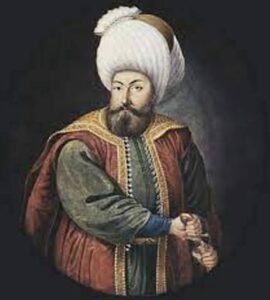


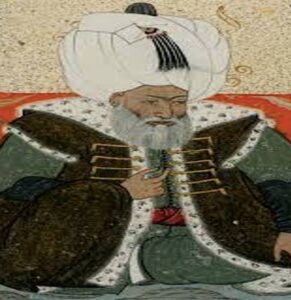

Military Technology During The Ottoman Empire

During the early centuries of the Ottoman Empire, science and technology emerged as an important part. The empire witnessed students from different countries do research in astronomy, arithmetic, philosophy, and faith. The Ottomans also played a huge role in the development of healthcare and hospitals and they witnessed advances in mining, medicine, and military technology. They have set up over 300 meters, which are the centers of learning and also an observatory in Istanbul.
The ottomans have employed experts from European countries like England, France, and the Netherlands to help them in manufacturing weapons and in training their technical staff. To learn more about military science and strategy, they founded centers that educate and train people for the military. Their military advisors were often Europeans.
Education During The Ottoman Empire

Most of the inspiration for education was from Europe. Europe played a huge role that helped them in organizing secondary and higher education. In the early years, the schools in the Ottoman Empire were usually master-apprentice relationships. This was considered to be a personalized form of learning because the student officially graduates only after his master feels that he is ready to leave the school.
In the later years, the educational system got swapped and new educational institutes were introduced. Here, students were divided based on their age; subject-specific teachers were employed; syllabus based teaching model was introduced; teachers were sent abroad for further education and training.
The first four Ottoman-era students went to France in 1830 to study military subjects. After Nine years, 36 students were sent to London, Paris and Vienna to study engineering.
The Ottoman Cuisine
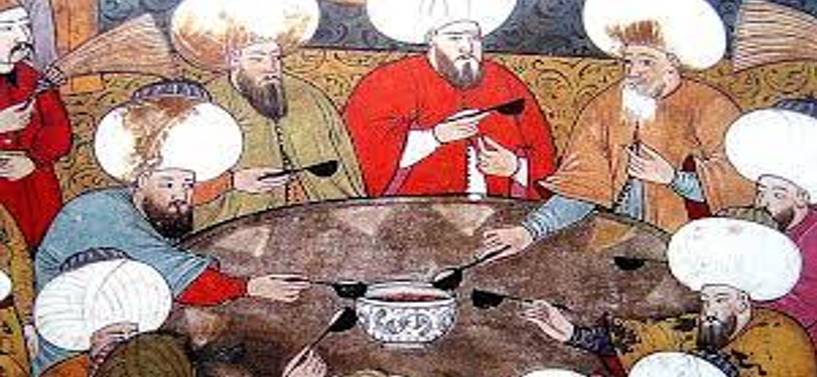
The Ottoman cuisine is a blend of Turkish, Middle Eastern, and Western influences. The most delicious and unique diet used by the sultans includes the following:-
- Hünkar Beğendi: Hünkar Beğendi, translated as “The Sultan Loved It.” This dish is made by stewing tantalizing lamb in tomato sauce.
- Patlıcanlı Pilav: A rice variety; a colourful, pretty dark dish.
- Piruhi: This is a dish that resembles momos. They are stuffed dumplings filled with cheese, onions, parsley.
- Keşkek: This dish is usually served during any religious ceremonies especially weddings. Its ingredients include wheat grains, a hint of oil, chicken or meat, and a lovely tomato sauce.
- Mutancana: This is an exotic dish made using lamb that tastes sweet, savoury and sour. This is the most favourite dish of the sultan Fatih Sultan Mehmet.
Women In The Ottoman History

- Even though the sultans are usually men, there was one female who was also considered as a leader. Kösem Sultan is the woman leader who reigned during the period of 4 statesmen whose names are Ahmet I, her sons Murat IV and İbrahim I, and her grandchild Mehmet IV. Some characteristic features made her a great leader. They are as follows:-
- Intelligence
- Skills
- Strong personality
- Living in Saray
- Being rational
- Being cheeseparing
- In addition to the above-mentioned person, there are few other powerful women in the Ottoman Empire. A great example would be Hurrem Sultan.
1. Hurrem Sultan, The Laughing One: -

- She is the wife of Suleiman The magnificent. After receiving the title “Hurren Sultan” she drew her attention to building charitable institutions. The charitable foundations are soup kitchens, hostels and mosques for pilgrims in Mecca, Medina, and Jerusalem. She was the inspiration to her husband who wrote the following poem.
Throne of my lonely niche, my wealth, my love, my moonlight.
My most sincere friend, my confidant, my very existence, my Sultan, my one and only love.
The most beautiful among the beautiful…
My springtime, my merry-faced love, my daytime, my sweetheart, laughing leaf…
My plants, my sweet, my rose, the one only who does not distress me in this world…
My Constantinople my Caraman, the earth of my Anatolia
My Badakhshan, my Baghdad, and Khorasan
My woman of the beautiful hair, my love of the slanted brow, my love of
Eyes full of mischief…
I’ll sing your praises always
I lover of the tormented heart, Muhibbi of the eyes full of tears, I am happy.”
– Suleiman The magnificent
2. Nurbanu Sultan, The Benevolent Haseki: -
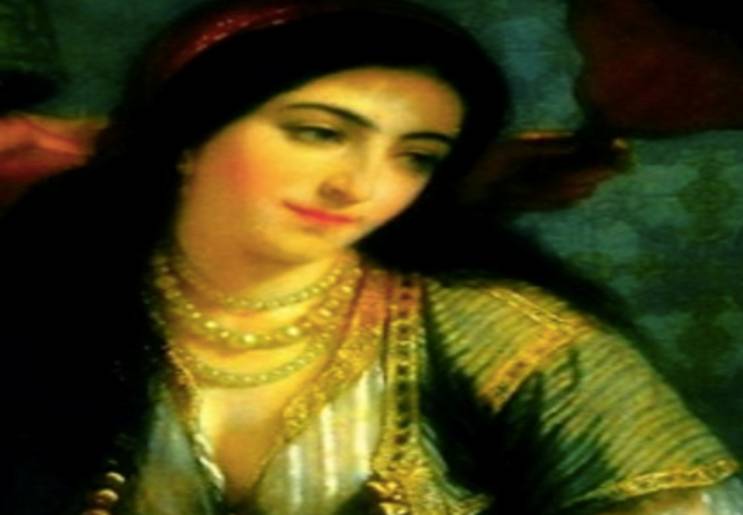
- She was the wife go Selim and she was his favorite wife. She is the first woman to become a member of the sultanate of women. She also played a huge role in allying with Catherine de Medici, the regent of France, establishing a relationship between the two countries.
3. Safiye Sultan, Protector Of The Heritage: -
- She is considered to be one of the most powerful and prosperous women of the 16th century. She was always the mission of preserving the kingdom’s vision created by Sultan and Suleiman. She is regarded as the key advisor to Murad and her son Mehmed III.
4. Handan Sultan, The Smiling Queen: -
- She is a kind, wise, over time and merciful person who helped her son to rule the empire successfully.
Traditions Followed During The Ottoman Empire

A distinguishing mark: The ottomans wear a turban that acts like a distinguishable mark. The turban would get changed depending upon the profession.
Respect: One of the most important traditions that the Ottomans follow is to have mutual respect, visit the houses of different nationals.
Red and yellow flowers: This is one of the unique traditions that the Ottomans follow. A red flower is kept outside the house of a young lady who is in the age of getting married. The red flower signals people to come and reach out to them. Whereas the yellow flower is usually kept at a sick person’s house as it signals the people around the necessity of being calm.
Checking a guest’s hunger: Usually, when a guest comes home, she/he is served a cup of tea along with a glass of water. If the guest drinks water first, it shows that the guest is hungry; the host makes a delicious meal for the guests and serves them otherwise they are full.
Generosity: It is important for the ottomans who are rich to help and do charities for the poor without embarrassing them.
Architecture During The Ottoman Empire

- The Ottoman Empire leaves a huge legacy in the form of its architecture and its architects. They have discovered a unique artistic vocabulary. You shall find a couple of instances below;
1. The Hagia Sofia: -
- This is a Dome-shaped church that got transformed into a mosque by Mustafa Kemal Ataturk in 1934. This is enlisted as a UNESCO World Heritage Site.
2. Mimar Sinan

- He is a great Ottoman architect who constructed over 300 structures that includes 92 mosques, 55 schools, 10 bridges, a36 palaces, 52 small mosques, 48 baths, and 3 hospitals. He is usually compared to Michelangelo, another architect in the west. He was the one responsible for the construction and the design goes all public works. His 3 most iconic works are the Şehzade Mosque in Istanbul (apprenticeship period), the Süleymaniye Mosque also in Istanbul (qualification stage), and the Selimiye Mosque in Edirne (master stage).
Top 13 Interesting Facts About The Ottoman Empire
Ottomans invented currently used surgical instruments such as forceps, scalpels, and catheters.
The Sultan along with his wives lived in the Topkapi Palace, Istanbul.
The sultan, being afraid of assassination, would move to a different room in the palace every night.
Suleiman was called ‘The Lawgiver’ by the Ottomans because he was considered the earthly leader of all the Muslims.
The elite battle troops of the sultans were called Janissaries.
Tulips were regarded as the symbol of beauty and perfection.
The sports that prospered during the empire were Turkish archery, wrestling, horseback using, arm wrestling, javelin throw, and swimming.
Architecture – the Ottoman structures were influenced by Persian, Byzantine Greek, and Islamic architectures.
Osman, a Seljuk Turk, is the person who is the founding father of the empire (his name is spelled Ottman or Othman; therefore the period was called ‘Ottoman’).
Ottoman classical music was an imperative part of their existence. Various ottoman sultans were musicians and music composers.
The ottoman classical music was derived primarily from Byzantine music, Armenian music, Arabic music, and Persian music.
The estimated population was around 35,000,000 in 1856 and the numbers came down to 24,000,000 on World War I eves.
Official Religions that were practiced include Sunni Islam. Minority religions included Shi’a Islam, Eastern Orthodox Christianity, Judaism, and Roman Catholicism.







